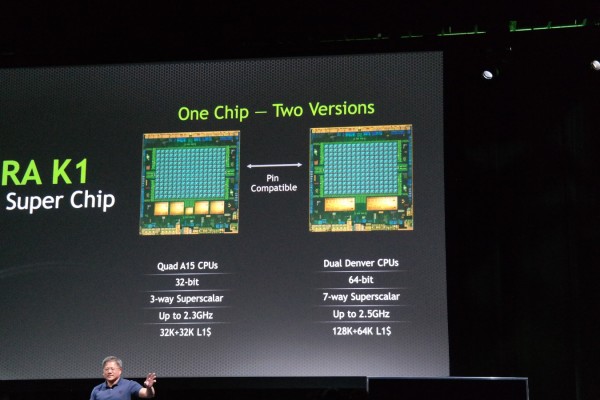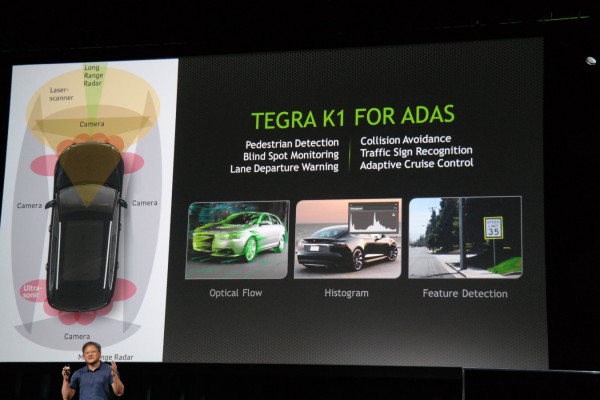Nvidia Launches Tegra K1 Mobile Chip with 192 Cores
Nvidia's taking its mobile processing platform to the next level. Tonight at CES, the chipmaker took the wraps off of its next generation mobile platform, Tegra K1. Designed to bring console-level graphics to mobile devices with a whopping 192 CUDA graphics processing cores, Tegra K1 is set to appear in a new generation of gaming tablets, gaming consoles, auto infotainment systems and smart TVs, though Nvidia didn't announce any design wins.
MORE: Best of CES 2014 Awards
"We've brought mobile computing to the same level as desktop computing," said Nvidia CEO Jen-Hsun Huang. He said that the company had chosen to name the new chip Tegra K1 instead of Tegra 5 because it is based on the company's Kepler processing technology.
"We happen to believe that the Android operating system in the future is going to be the most important operating system for gaming," said Nvidia CEO Jen-Hsun Huang. He later said that Epic Games would be bringing its Unreal 4 engine to Tegra K1, which will allow game developers to build their AAA titles for the platform.
To demonstrate the chip's graphics prowess, Huang showed a demo of a moving human face called "Digital Ira" which had extremely realistic ray tracing and rendering, the kind that normally requires high-end desktop graphics. We could see tiny pieces of stubble and imperfections on Ira's face, even light shining through the skin in his ears. When he turned off the graphics effects, Ira's face looked completely flat and unlife like. He also dmoed how the Tegra K1 can handle physics with a demo with a futuristic city getting hit by a meteor.
He then showed a demo with a first person view of a subway station with detailed tiled walls and smoke pouring it. He pointed out how light in the pictures was coming from multiple sources, a feature he called "mobile illumination." He said the demo was running Unreal Engine 4 on the Tegra K1 processor and pointed out other key details like water dripping off of the walls.
“This is realtime computer graphics on a little mobile chip,” Huang said.
Sign up to receive The Snapshot, a free special dispatch from Laptop Mag, in your inbox.
Huang showed a slide comparing the Tegra K1 with the Xbox 360 and PlayStation. He also showed a set of benchmark results pitting the Apple A7 CPU that powers the iPad with the K1 and Nvidia's chip was three times faster.
He then announced that Tegra K1 will come in two SKUs, one with a quad-core A15 32-bit CPU and another with two CPUs using Nvidia's long-touted 64-bit Denver technology. He then showed a working system running Android with the Denver-based chip.
Huang then talked about the Tegra K1 VCM for cars and how it would bring super computing to cars to offer beffer advanced driver assistance systems (ADAS) such as pedestrian detection and blindspot monitoring. He said that Tegra K1 could move the industry closer to self-driving cars.
Huang also introduced a new initiative called Project Mercury, which is designed to create better and more realistic computer graphics for car systems. An Nvidia rep showed a completely digital speedometer which appeared on a screen that could someday be behind the steering wheel in a real car. The speedometer had highly realistic dials and gauges like you'd find in a car with a physical dashboard today.
There's no denying that the Tegra K1 represents a huge leap for mobile performance, but the success of this chip won't be judged by demos but shipping products. We'll have to wait until the K1 shows up in phones and tablets to decide just how good this innovation is.







